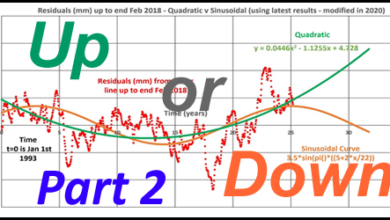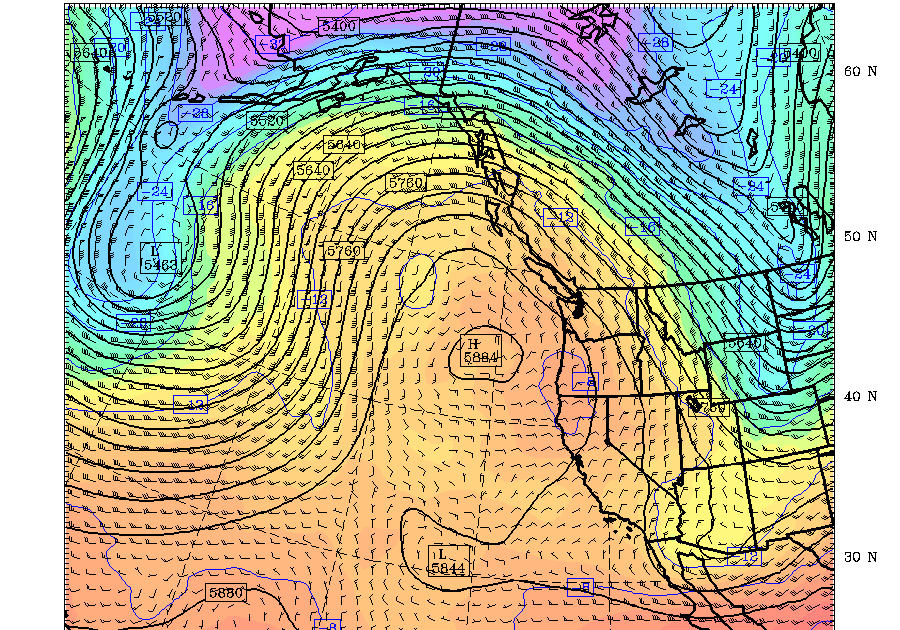Energy In The Air • Watts Up With That?

Guest Post by Willis Eschenbach.
TL;DR: Ramanathan proposed that the “greenhouse effect” could be measured as surface upwelling longwave minus top-of-atmosphere (TOA) upwelling longwave. However, this ignores the contributions to TOA upwelling longwave from 1) atmospheric absorption of solar energy, and 2) surface-to-atmosphere net energy transfer of latent heat of evaporation/condensation and sensible heat. In addition, it also ignores variation in the proportion of upwelling and downwelling energy loss from the atmosphere.
In the seminal paper “Thermodynamic regulation of ocean warming by cirrus clouds deduced from observations of the 1987 El Nino” by V. Ramanathan & W. Collins, the authors proposed that we could measure the amplitude of the poorly-named “greenhouse effect” directly. They said it was the upwelling longwave energy radiated by the surface, minus the amount leaving the top of the atmosphere. The difference, they reasoned, would be the amount of longwave radiation absorbed by the so-called “greenhouse gases” in the atmosphere, principally water vapor and carbon dioxide. And this method of measurement of the “greenhouse effect” has become the general practice.
Sounds good, and I’ve used that definition without really thinking about it … but closer examination reveals that there are two problems with Ramanathan’s method.
First, upwelling longwave radiation is not the only source of energy flowing through the atmosphere. Energy enters the atmosphere from three distinct sources.
- Upwelling longwave energy from the surface that’s absorbed by the “greenhouse” gases in the atmosphere.
- Solar energy that is absorbed by the atmosphere.
- Net of the latent (evaporation/condensation) and sensible heat transfer to-from the atmosphere.
Let me start with solar energy that’s absorbed by the atmosphere. Here’s a map of the global distribution of that energy flux.

Figure 1. Average absorption of solar energy by the atmosphere.
There are some interesting aspects of this. First, the major absorbers of solar radiation are clouds and aerosols. The cloudy areas in the deep tropics are an obvious case. Less obvious is India, eastern China, and eastern US, where aerosols increase the solar absorption.
You can also see how the clear dry air over the Antarctic and Greenland ice caps means that little solar energy is absorbed by the atmosphere in those areas.
The second source of energy flowing through the atmosphere is the sensible and latent heat loss from the surface to the atmosphere. Here’s a map of where that’s happening.

Figure 2. Latent and sensible energy loss from the surface to the atmosphere. Average of CERES data, Mar 2000 – Feb 2022.
The large red areas in the oceans south of the Equator are where there are few clouds and trade winds, so evaporative and sensible loss from the surface to the atmosphere is high.
Finally, we get to the third source of energy flow to the atmosphere. This is the absorption of upwelling radiation by “greenhouse” gases. But how much is absorbed and how much passes through?
Unfortunately, the method of Ramanathan doesn’t actually tell us. Remember that there are three sources of energy flowing to the atmosphere, not just one. So the TOA upwelling longwave flux is not a simple function of the surface upwelling longwave flux. Here’s a graph of surface and TOA upwelling longwave that demonstrates their differences.

Figure 3. Upwelling longwave radiation anomaly, surface and top-of-atmosphere (TOA).
While there are some similarities, obviously there is more going on than just the absorption of upwelling longwave from the surface.
Next, here’s a comparison of the changes in the three sources of energy flux to the atmosphere.

Figure 4. Change in sources of energy flux to the atmosphere
Now, this is curious. Upwelling longwave radiation from the surface has increased. Absorbed solar flux has increased, although only slightly. But latent/sensible surface-to-atmosphere heat transfer has dropped … go figure.
This demonstrates the first problem with Ramanathan’s method—the amount of TOA longwave is a complex function, not just of surface temperature and CO2, but also of latent/sensible heat transfer from the surface to the atmosphere, and of the atmospheric absorption of solar energy.
But that is not the only problem. Here’s the second one. The atmosphere loses energy both to the surface and to space. But the proportions of energy going up and down can change over time. Here’s a graph showing changes in atmospheric radiative energy losses to surface and to space.

Figure 5. Energy losses upwards and downwards from the atmosphere
Again, a most curious outcome. There are large swings in the energy loss to the surface and smaller swings in energy loss to space. But around 2015, there was a big shift, with much more energy going downwards to the surface. Why? No clue. I can’t even guess at what controls how much atmospheric energy flux goes out to space versus how much goes down to the surface. What would determine that?
Net result of all of this?
Well, I fear Ramanathan’s method is simply not valid. There’s no reason to assume that changes in the TOA upwelling longwave radiation are a result of changes in greenhouse gas absorption of surface radiation. They are also a function of atmospheric solar absorption and latent/sensible surface-to-atmosphere heat transfer.
In closing, I fear I don’t see any easy way around this. Seems to me that to measure it directly, we’d need a long record of spectrum-resolved gridded satellite-observed radiation data so we could tell by frequency which upwelling radiation is directly from the surface and which is from the atmosphere … and unfortunately, we don’t have that.
Settled science.
Here on our hillside, blessed rain. My very best wishes to everyone,
w.
PS—Please quote the exact words you’re discussing. It avoids endless misunderstandings.




